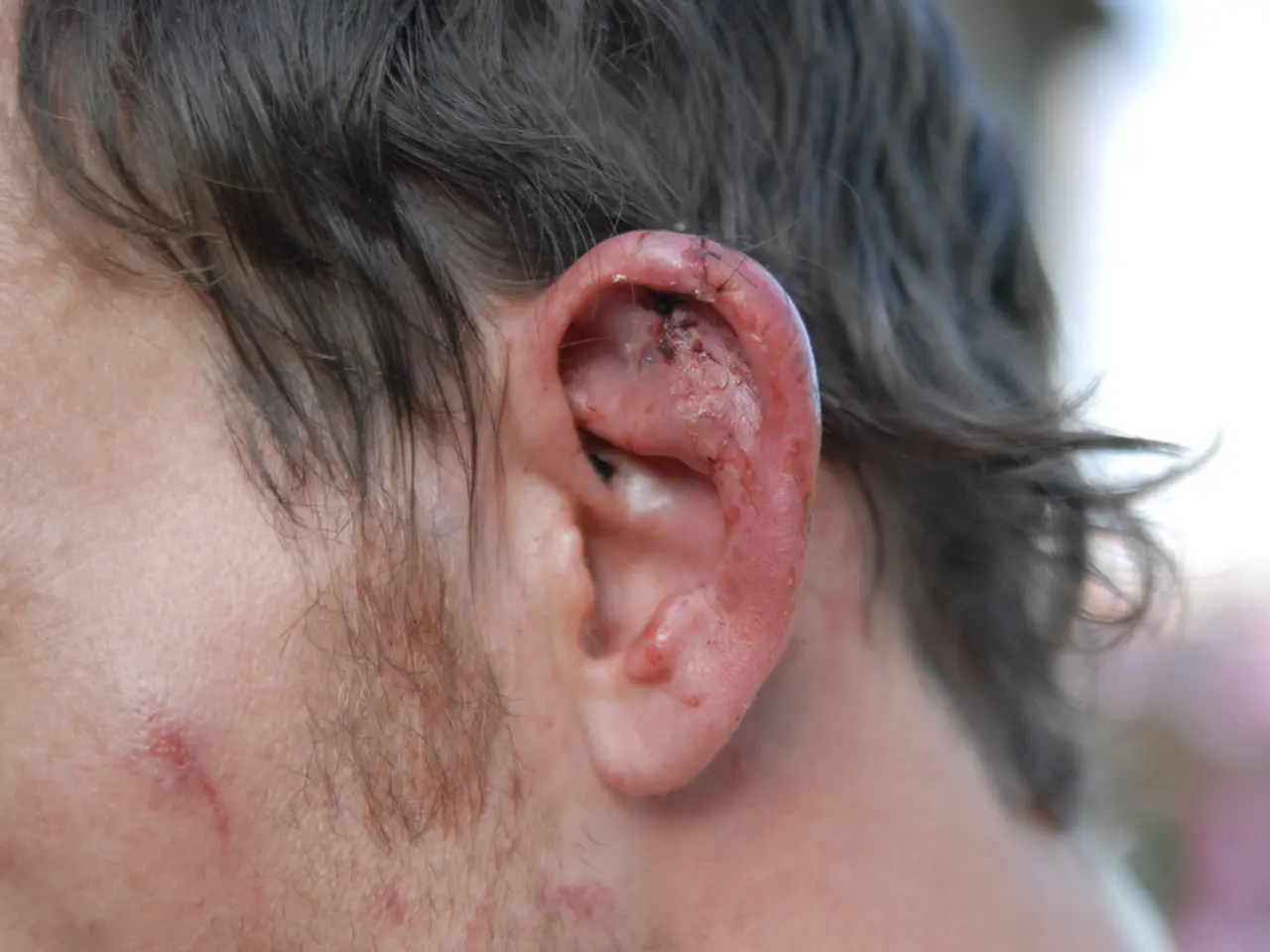Acne of comedonal type: Descriptions, images, and remedies explained
Comedonal acne, a common skin condition, is characterised by the formation of small bumps on the skin, including whiteheads, blackheads, and larger lesions such as macrocomedones and giant comedones. This type of acne is non-inflammatory and does not usually contain pus or bacteria.
The root cause of comedonal acne lies in the interplay of excess sebum production, abnormal shedding of skin cells, and factors such as sun exposure, skin irritation, excessive testosterone production, harsh contact with the skin, smoking, and dietary factors like consuming excess milk or sugar.
Microcomedones, the earliest and smallest lesions, block hair follicles but are too small to be seen with the naked eye. They form when excess sebum and keratinized cells create a plug inside the follicle, acting as precursors to visible comedones.
Whiteheads, or closed comedones, occur when the follicular opening is closed, trapping sebum and dead skin cells inside a pore, resulting in a small, flesh-colored or white bump. Blackheads, or open comedones, are formed when the follicle is open, and the trapped sebum and keratin are exposed to air, causing oxidation of melanin and lipids that darken the plug, creating a characteristic black or dark appearance.
Larger plugged follicles develop into macrocomedones, which appear as flesh-colored bumps under the skin but without an open pore. Giant comedones, considered a type of cystic lesion, are significantly larger than macrocomedones and may represent a more chronic or severe form of comedonal acne.
Solar comedones, also known as Favre-Racouchot syndrome, develop due to chronic sun exposure and are typically seen in older adults. Unlike typical acne, solar comedones are related to photoaging and skin damage rather than hormonal changes.
In treating comedonal acne, refraining from using skin or hair care products that contain oil can be beneficial. Washing the face twice daily with a mild soap and lukewarm water can help reduce irritation. A person will require a prescription for retinoids from a dermatologist or another healthcare professional. Various medicated creams and gels can help in the treatment of comedonal acne, with some effective ingredients including retinoids, azelaic acid, benzoyl peroxide, and salicylic acid.
Using topical retinoids can prevent the formation of further comedones. After reviewing tolerance to various retinoids, the authors conclude that a person's skin may respond best to an OTC adapalene gel sold as Differin. In rare cases, comedonal acne does not respond to topical treatments, and a doctor may recommend an in-office treatment such as microdermabrasion, cryotherapy, or electrosurgery.
Consistently following a skin care routine that involves washing the face and using gentle, oil-free products can help prevent future comedone breakouts. It's essential to avoid skin or hair care products that contain oil, as they can exacerbate comedonal acne. By understanding the different types of comedonal acne and their formation mechanisms, individuals can make informed decisions about their skincare regimens and seek appropriate treatment when necessary.
- Additionally, underlying medical conditions such as multiple sclerosis, atopic dermatitis, psoriasis, and obesity may contribute to increasing the severity of comedonal acne.
- The predictive science of health and wellness suggests that improved skin care, including a balanced diet and regular exercise, may help manage medical conditions like depression and bipolar disorder, reducing the risk of comedonal acne.
- Interestingly, in some cases, comedonal acne may indicate an underlying health issue, such as non-small cell lung cancer (NSCLC) or human immunodeficiency virus (HIV), though this is less common.
- Furthermore, certain medications like corticosteroids and lithium, used for treating medical conditions like asthma and bipolar disorder, can potentially aggravate comedonal acne.
- To prevent complications, it is crucial to consult a medical professional if comedonal acne persists despite following a strict skincare routine.
- Science has not yet found a concrete link between comedonal acne and medical conditions like multiple sclerosis or HIV, but further research is underway for a comprehensive understanding of their relation.
- In managing comedonal acne, it is advisable to address any underlying medical conditions to ensure effective treatment and to promote overall health and wellness.
- Moreover, a dermatologist or healthcare professional may recommend changes to a medication regimen to minimize the symptoms of comedonal acne.
- It is essential to be aware that other factors, such as medical conditions, can exacerbate or contribute to comedonal acne, making a comprehensive approach to skincare and health an essential part of prevention and treatment strategies.




